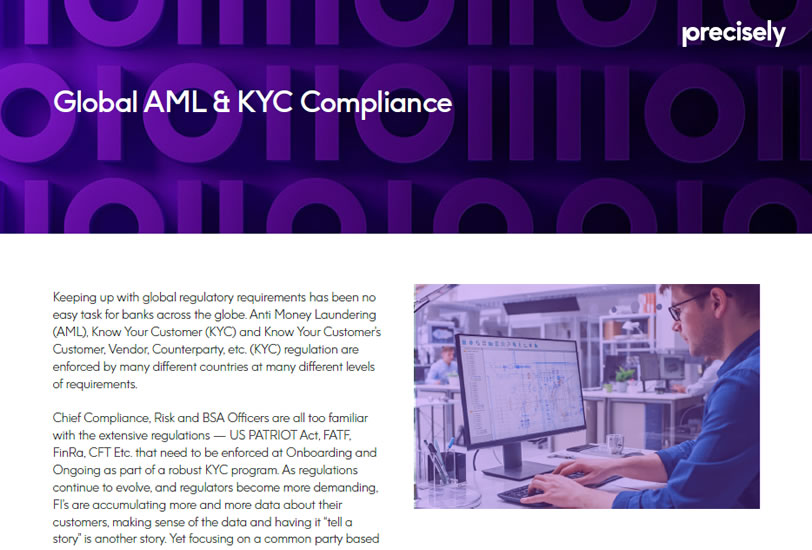White Paper
Global AML and KYC Compliance
Keeping up with global regulatory requirements has been no easy task for banks across the globe. Anti Money Laundering (AML), Know Your Customer (KYC) and Know Your Customer’s Customer, Vendor, Counterparty, etc. regulations are enforced by many different countries at many different levels of requirements.
Chief Compliance, Risk and BSA Officers are all too familiar with the extensive regulations — US PATRIOT Act, FATF, FinRa, CFT Etc. that need to be enforced at onboarding and ongoing as part of a robust KYC program. As regulations continue to evolve, and regulators become more demanding, FI’s are accumulating more and more data about their customers, making sense of the data and having it “tell a story” is an even bigger challenge. Yet focusing on a common party based network identifier and understanding relationships within the data is what is needed to create a risk aggregated KYC profile.
Pre and post TMS
Transaction Monitoring Systems (TMS) today have two challenges.
False positives
Where scenarios in the TMS look at transactions only at the account level and look at individual transactions, not associated with an originator and beneficiary. The lack of beneficiary transaction visibility and sometimes the resolution of the entity data, creates alerts for transactions that would otherwise be viewed as legitimate financial transactions.
False negatives
Transactions that belong to the same entity or beneficiary, yet are not flagged by the TMS. Because the TMS does not associate the multiple accounts or transactions being owned or linked to the same entity or beneficiary, it does not create an appropriate alert to be investigated. These transactions are masked from the TMS by the account holders that may have intentionally or unintentionally intended to look like accounts owned by separate entities. A typical example would be structuring a money transfer in multiple transactions under $10,000 USC to avoid Currency Transaction Reporting (CTR).
This whitepaper explores how investigators are able to achieve efficiency and focus through consolidated alerts and by utilizing a visual and interactive interface to review alerts, modify data queries and to provide as a visual aid in the SAR filing to regulators.
